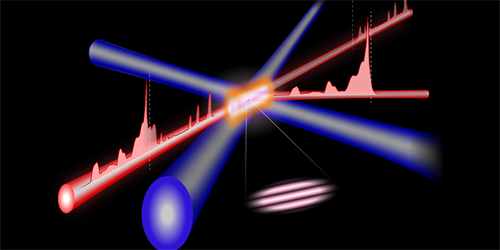Cleaning Intense Laser Pulses with Plasma
Once a laser pulse packs more than 1018 W/cm2 or so of power, its electric field strips electrons from atoms and accelerates them to near light speed. This effect could lead to compact and highly efficient particle accelerators (see Viewpoint: Shooting Ahead with Wakefield Acceleration). But for various reasons to do with pulse generation, the main pulse is unavoidably preceded by weaker prepulses, which can muddle an experiment’s initial conditions and frustrate anticipated results. Now Matthew Edwards of Stanford University, working at Julia Mikhailova’s lab at Princeton University, and collaborators have demonstrated a setup that can delete meddlesome prepulses with unprecedented effectiveness [1].
A key component of the researchers’ setup was demonstrated in 2009 [2]. Two pulsed beams of the same wavelength converged on a volume of gas contained in a cell, ionizing the gas where the beams constructively interfered. The difference in refractive index between the plasma and the neutral gas created an instant and switchable diffraction grating.
Edwards and his collaborators have now added a third laser, which improved the plasma production and, with it, grating contrast. They also added a delay between the three ionizing pulses and the laser pulse in need of cleaning. This laser’s prepulse passed through the cell before the grating was switched on, while the laser’s main pulse was diverted by the grating to its intended target.
One measure of pulse cleaning is the ratio of the prepulse intensity in the cleaned and uncleaned pulses. In this experiment the prepulse was weakened by a factor of 3 × 105. Although the laser powers in the demonstration were modest—ionizing the gas but not accelerating the electrons to near light speed—Edwards and his collaborators see a path toward modifying the setup to reach the regime of relativistic optics.
–Charles Day
Charles Day is a Senior Editor for Physics Magazine.
References
- M. R. Edwards et al., “Greater than five-order-of-magnitude postcompression temporal contrast improvement with an ionization plasma grating,” Phys. Rev. Lett. 133, 155101 (2024).
- S. Suntsov et al., “Femtosecond laser induced plasma diffraction gratings in air as photonic devices for high intensity laser applications,” Appl. Phys. Lett. 94 (2009).





